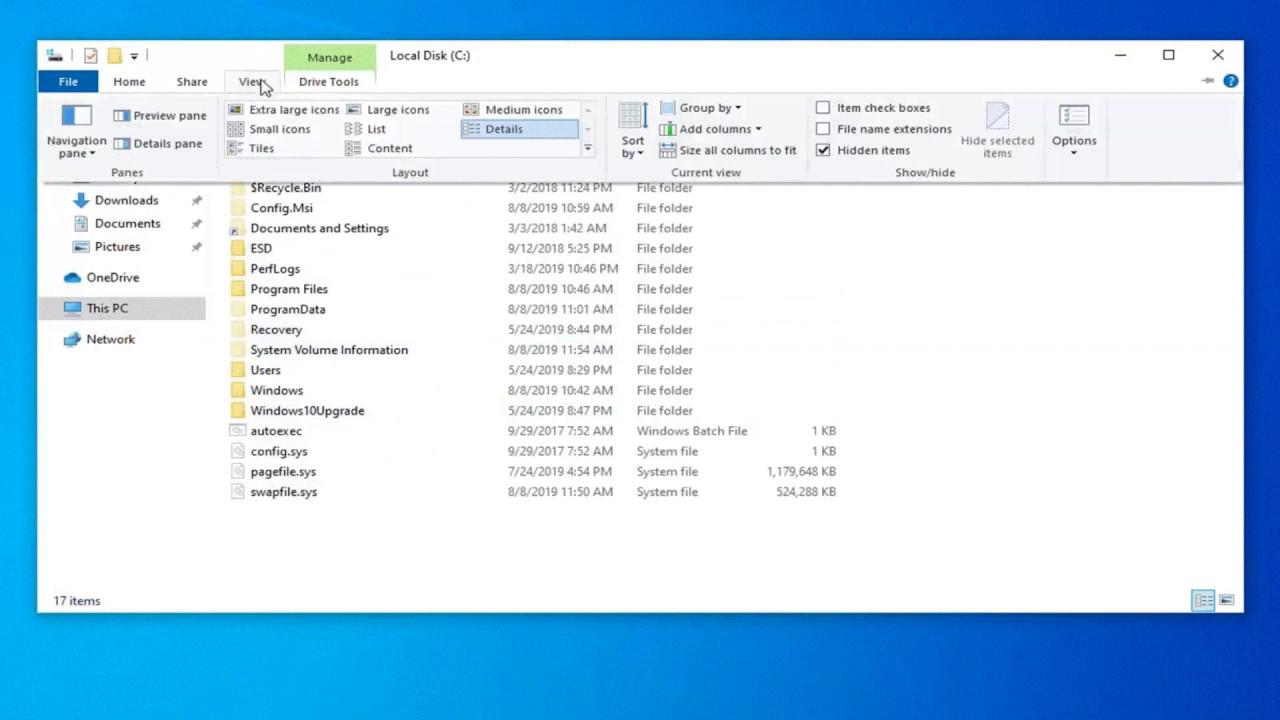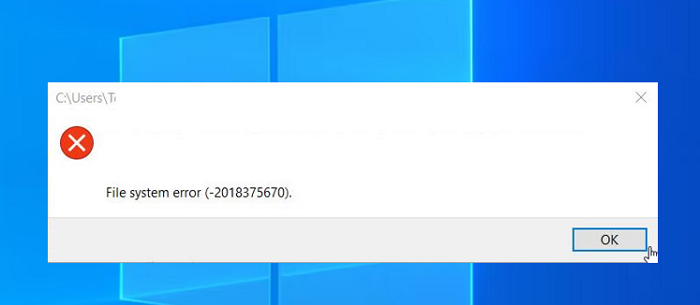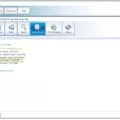File System Error is a common issue that occurs in Windows 10 and can prevent users from accessing certain apps or groups of apps. This error is caused by a bug in Windows Update and can be frustrating for users who rely on these apps for their everyday use.
One of the most common types of File System errors is the ms settings file system error. This error occurs when users try to access the Windows 10 Settings app and are met with an error message. Fortunately, there are several methods that users can use to fix this issue.
Method 1: Run Windows Update Troubleshooter
The first method involves running the Windows Update Troubleshooter. This tool can help identify and fix any issues with Windows Update that may be causing the File System Error. To run the troubleshooter, follow these steps:
1. Press the Windows key + I to open the Settings app.
2. Click on Update & Security.
3. Click on Troubleshoot.
4. Click on Windows Update.
5. Click on Run the troubleshooter.
6. Follow the on-screen instructions to complete the troubleshooting process.
Method 2: Run Chkdsk
Another method to fix the File System Error is to run the Chkdsk tool. This tool can help identify and fix any issues with the hard drive that may be causing the error. To run Chkdsk, follow these steps:
1. Press the Windows key + X.
2. Click on Command Prompt (Admin).
3. Type chkdsk C: /f /r /x and press Enter.
4. Wait for the process to complete.
Method 3: Run an SFC or DISM Scan
Running an SFC (System File Checker) or DISM (Deployment Image Servicing and Management) scan can also help fix the File System Error. These scans can help identify and fix any corrupted system files that may be causing the error. To run an SFC or DISM scan, follow these steps:
1. Press the Windows key + X.
2. Click on Command Prompt (Admin).
3. Type sfc /scannow and press Enter.
4. Wait for the process to complete.
5. If the SFC scan doesn’t fix the issue, run a DISM scan by typing the following command: DISM /Online /Cleanup-Image /RestoreHealth
Method 4: Check File System by MiniTool Partition Wizard
Another method to fix the File System Error is to check the file system using a third-party tool like MiniTool Partition Wizard. This tool can help identify and fix any issues with the file system that may be causing the error. To use MiniTool Partition Wizard, follow these steps:
1. Download and install MiniTool Partition Wizard.
2. Launch the program and select the drive you want to check.
3. Right-click on the drive and select Check File System.
4. Follow the on-screen instructions to complete the process.
The File System Error and ms settings file system error can be frustrating for users, but there are several methods that can be used to fix the issue. By running Windows Update Troubleshooter, chkdsk, SFC, or DISM scans, or using third-party tools like MiniTool Partition Wizard, users can identify and fix any issues that may be causing the error.

Understanding File System Error (-2147219196)
File System Error (-2147219196) is a common error that occurs on Windows 10 when you try to access or open certain apps, especially photo apps. This error is caused by a bug in Windows Update, which prevents the app from opening and displaying its content. The error code -2147219196 indicates that there is an issue with the file system, preventing the app from accessing the necessary files and folders.
This error can be frustrating, but there are some steps you can take to fix it. First, try restarting your computer and the app to see if that resolves the issue. If not, you can try running the System File Checker tool, which can detect and repair any corrupted system files that may be causing the error. You can also try updating your drivers or reinstalling the app to see if that fixes the issue.
File System Error (-2147219196) is an error that occurs on Windows 10 when there is an issue with the file system preventing certain apps from opening or displaying their content. It can be resolved by restarting your computer, running the System File Checker tool, updating drivers, or reinstalling the app.

Fixing File System Error (-2147219200)
To fix the file system error (-2147219200), you can try several methods. Here are some of the most effective ones:
Method 1: Run Windows Update Troubleshooter.
– Open Settings and go to Update & Security.
– Click on Troubleshoot and select Windows Update.
– Click on Run the troubleshooter and follow the instructions.
Method 2: Run Chkdsk.
– Press Win + X and select Command Prompt (Admin).
– Type chkdsk /f /r and press Enter.
– Press Y to confirm the disk check and restart your computer.
Method 3: Run an SFC or DISM Scan.
– Open Command Prompt (Admin).
– Type sfc /scannow and press Enter.
– Wait until the scan is complete.
– If the issue persists, type DISM /Online /Cleanup-Image /RestoreHealth and press Enter.
– Wait until the process is complete.
Method 4: Check the disk for errors.
– Open File Explorer and right-click on the drive you want to check.
– Select Properties and go to the Tools tab.
– Click on Check under Error checking and wait until the scan is complete.
Method 5: Update the device drivers.
– Open Device Manager and expand the device category with a yellow exclamation mark.
– Right-click on the device and select Update driver.
– Follow the instructions to update the driver.
Method 6: Perform a System Restore.
– Open Control Panel and go to System and Security.
– Click on System and select System Protection.
– Click on System Restore and follow the instructions to restore your system to a previous state.
Method 7: Check the File System with MiniTool Partition Wizard.
– Download and install MiniTool Partition Wizard.
– Launch the program and select the drive you want to check.
– Click on Check File System and wait until the scan is complete.
By following these methods, you should be able to fix the file system error (-2147219200) on your Windows computer.
Troubleshooting ‘MS-Settings Not Found’ Error
If you are encountering the issue of ms-settings not found, you may try the following solutions to fix it:
1. Restart your computer: Sometimes, a simple restart can help to fix the issue.
2. Use the System File Checker (SFC) tool: This tool can help to scan and repair damaged or missing system files. To use it, open Command Prompt as an administrator and type “sfc /scannow” and hit Enter.
3. Run the DISM tool: This tool can help to repair the Windows system image and fix the ms-settings issue. Open Command Prompt as an administrator and type “DISM /Online /Cleanup-Image /RestoreHealth” and hit Enter.
4. Check for Windows updates: Make sure your Windows is up to date with the latest updates. To check for updates, go to Settings > Update & Security > Windows Update and click on Check for updates.
5. Create a new user account: Sometimes, the issue can be related to the user account. Create a new user account and check if the ms-settings issue still persists.
If none of the above solutions work, you may need to perform a system restore or reinstall Windows. It is recommended to back up your data before performing any major changes to your system.
Fixing the ‘MS-Settings Display This File Does Not Have a Program Associated With It’ Error
If you encounter the error message “This file does not have a program associated with it for performing this action. Please install a program or, if one is already installed, create an association in the Default Programs control panel” when trying to access Windows 11/10 Settings, there are various methods you can try to fix the issue. Here are some possible solutions:
1. Run SFC and DISM scans: System File Checker (SFC) and Deployment Image Servicing and Management (DISM) are built-in Windows utilities that can help you fix corrupted system files. To run these scans, open Command Prompt as an administrator and type “sfc /scannow” followed by “DISM /Online /Cleanup-Image /RestoreHealth”. After the scans are complete, restart your PC and check if the issue is resolved.
2. Re-register UWP apps: Universal Windows Platform (UWP) apps, including Settings, may malfunction due to corrupted or missing files. To re-register these apps, open PowerShell as an administrator and type “Get-AppXPackage -AllUsers | Foreach {Add-AppxPackage -DisableDevelopmentMode -Register “$($_.InstallLocation)\AppXManifest.xml”}”. Wait for the command to complete and restart your PC.
3. Scan your PC with your antivirus software: Malware or viruses can cause system errors and interfere with app functionality. Make sure your antivirus software is up-to-date and run a full system scan.
4. Create a new Local Administrator account: If the issue is specific to your user account, creating a new Local Administrator account can help. To do this, go to Settings > Accounts > Family & other users > Add someone else to this PC. Select “I don’t have this person’s sign-in information” and choose “Add a user without a Microsoft account”. Type a username and password for the new account and select “Finish”. Log in to the new account and check if the issue is resolved.
5. Try System Restore: If the issue started recently, you can try using System Restore to revert your PC to a previous state when the error wasn’t occurring. To do this, go to Start > Settings > Update & Security > Recovery > Open System Restore. Select a restore point from before the issue started and follow the prompts to complete the process.
6. Perform an In-place Upgrade: If none of the above solutions work, you can try performing an In-place Upgrade of Windows. This process reinstalls Windows while keeping your personal files, apps, and settings intact. To do this, go to the Microsoft website and download the Windows 11/10 Media Creation Tool. Follow the prompts to create a bootable USB or DVD, then boot from it and select “Upgrade this PC now”. Follow the prompts to complete the process. Note that this process can take several hours and there is a small risk of data loss, so make sure you have a backup of your important files.
Conclusion
The File System Error (-2147219196) is a frustrating issue faced by many Windows 10 users. The error can prevent you from using certain apps, particularly photo apps, or a group of apps altogether. However, there are several methods to fix this error, including running Windows Update troubleshooter, Chkdsk, SFC, or DISM scans, and checking the file system by MiniTool Partition Wizard. Additionally, if you encounter this error while accessing Windows 11/10 settings, you can try running SFC and DISM scans, re-registering UWP apps, scanning your PC with antivirus software, creating a new local administrator account, performing a system restore, or an in-place upgrade. With these solutions, you should be able to resolve the File System Error and get back to using your Windows 10 device without any further issues.








